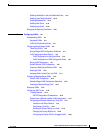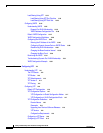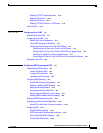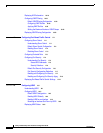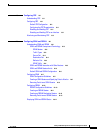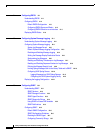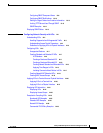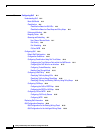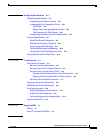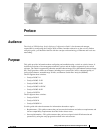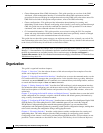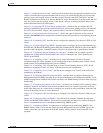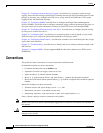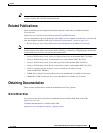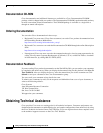
Contents
xxi
Catalyst 2950 Desktop Switch Software Configuration Guide
78-11380-05
CHAPTER
26 Configuring EtherChannels 26-1
Understanding EtherChannels 26-1
Understanding Port-Channel Interfaces 26-2
Understanding the Port Aggregation Protocol 26-3
PAgP Modes 26-4
Physical Learners and Aggregate-Port Learners 26-5
PAgP Interaction with Other Features 26-5
Understanding Load Balancing and Forwarding Methods 26-5
Configuring EtherChannels 26-7
Default EtherChannel Configuration 26-7
EtherChannel Configuration Guidelines 26-8
Configuring Layer 2 EtherChannels 26-8
Configuring EtherChannel Load Balancing 26-10
Configuring the PAgP Learn Method and Priority 26-11
Displaying EtherChannel and PAgP Status 26-11
CHAPTER
27 Troubleshooting 27-1
Using Recovery Procedures 27-1
Recovering from Corrupted Software 27-2
Recovering from a Lost or Forgotten Password 27-2
Recovering from a Command Switch Failure 27-4
Replacing a Failed Command Switch with a Cluster Member 27-5
Replacing a Failed Command Switch with Another Switch 27-6
Recovering from Lost Member Connectivity 27-7
Preventing Autonegotiation Mismatches 27-8
GBIC Module Security and Identification 27-8
Using Debug Commands 27-8
Enabling Debugging on a Specific Feature 27-9
Enabling All-System Diagnostics 27-9
Redirecting Debug and Error Message Output 27-10
Using the crashinfo File 27-10
APPENDIX
A Supported MIBs A-1
MIB List A-1
Using FTP to Access the MIB Files A-2
I
NDEX



